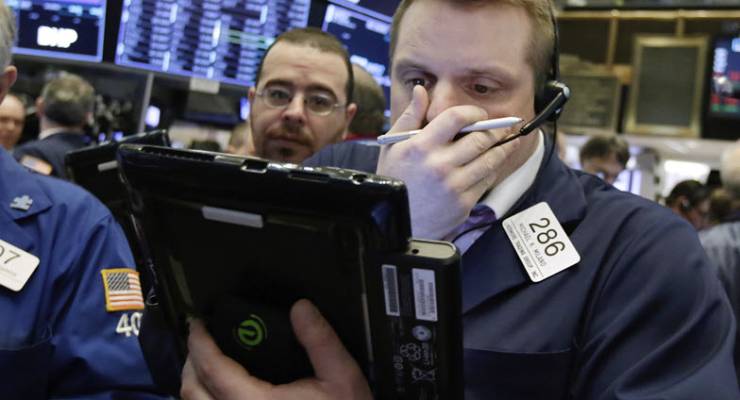
So the International Monetary Fund thinks the Australian economy will shrink 6.7% this year, in its latest update to its global economic forecasts.
Not 6%, or 7%, but 6.7%. And a 6.1% rebound next year. Just to give the impression that they’re not licking their finger and sticking it up in the wind.
It’s only the latest in the plethora of forecasts of what is happening in the Australian economy and economies around the world, with dire numbers being uttered, mostly double digit and negative, about unemployment and growth.
International institutions, bank economists, governments, academic economists and commentators are all having a crack.
The IMF has to offer forecasts, because, really, what else would it do? But the extensive coverage given to the IMF’s forecasts, and others before it, by the media reflects a failure of the critical faculties of journalists and editors.
The forecasts of government bodies — like those around employment released yesterday by Treasury — are important to the extent that we know policymakers will be guided by them.
But the forecasts of non-government bodies currently are worth nothing. They don’t add anything to our understanding of what’s happening in the world, except to reinforce worry and stress.
We know the economy is being smashed right now. By how much? Well we’ve never globally shut down economies at the same time before, so the best we’ve got is informed guesswork.
When you start having to go back to the impact of the Black Death on 14th century labour markets for analysis (impact: real wage rises because fewer workers, which doubtless had the Business Council of Medieval Europe and the Aquitaine Financial Review complaining about the cost of labour making the continent uncompetitive) then your decimal point pretence of accuracy is ridiculous.
Truth is, we’re in a data hole created by the extraordinarily rapid onset of the crisis.
Up until February, we were speculating about whether coronavirus in China, coupled with the bushfires, would knock a 0.1% or 0.2% off growth. Six weeks later, the economy was in the deep freeze and there were lines outside Centrelink.
So the crop of economic data we’re getting now is out of date — snapshots from a world pre-virus, a world that isn’t coming back, at least not for a long time. And we won’t start getting high quality data on what’s happening now for the next few weeks, despite the Australian Bureau of Statistics’ commitment to expediting data during the crisis.
Worse, the way economies are being shut down is making it harder for statisticians in other countries such as the US and China to collect accurate estimates — and the same will happen here.
The US Bureau of Labour Statistics, which issues America’s monthly consumer price reports, pointed out last Friday that widespread business closures across the US affected March’s CPI report, with in-store data collection suspended on March 16. Data quality was also harmed “by the temporary closing or limited operations of certain types of establishments,” leading to “an increase in the number of prices being considered temporarily unavailable and imputed”.
As for forecasting, well Treasury told the government to not bother with the budget until much later in the year because they had no idea what was happening to the economy — which is about the most accurate statement to come out Treasury for several years, particularly when it comes to wages growth. But for banks, economists, commentators and the IMF, they don’t have the burden of having policy based on their forecasts, so they can do it as much as they like.
And even when we do get the data for what’s happening now, our understanding will be subject to constant revision over coming years. The ABS regularly revises previous data for numbers like economic growth. A point up here, a point down there.
Sometimes it adds up. You might remember when the Rudd-Swan government’s stimulus package lifted economic growth in 2009 enough to avoid a recession, which would have smashed confidence and led to hundreds of thousands of people losing their jobs. At the time, the ABS said the economy grew in the March 2009 quarter by 0.4% after it fell by 0.6% in the December 2008 quarter.
Now, according to the ABS, it thinks the economy fell by 0.5% in the December 2008 quarter — and grew by 1% in the crucial March 2009 quarter, more than double the estimate at the time. Rudd and Swan knocked it out of the park with the stimulus packages.
Hopefully Morrison and Frydenberg manage the same feat. But we won’t know for a long, long time.









Crikey is committed to hosting lively discussions. Help us keep the conversation useful, interesting and welcoming. We aim to publish comments quickly in the interest of promoting robust conversation, but we’re a small team and we deploy filters to protect against legal risk. Occasionally your comment may be held up while we review, but we’re working as fast as we can to keep the conversation rolling.
The Crikey comment section is members-only content. Please subscribe to leave a comment.
The Crikey comment section is members-only content. Please login to leave a comment.